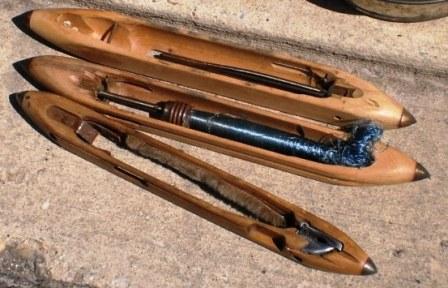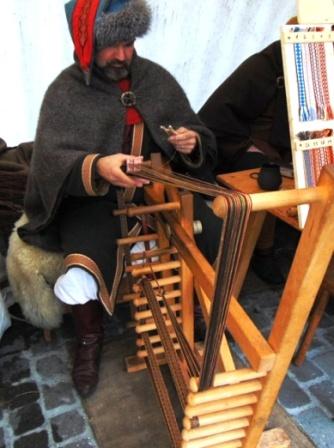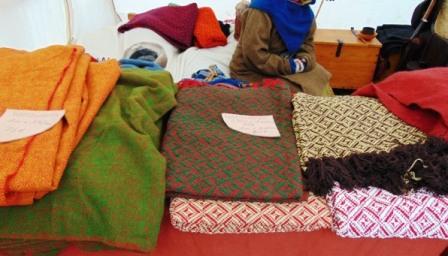Weaving is making textile rags by interweaving horizontal and vertical groups of threads.
Long pendant wires, most of which is still wound up, are attached next to each other and parallel tensed. This is the warp. It determines the width of the cloth. In some cases, the warp threads (or ends) are glued in order to strengthen them.
 By tilting a beam with grooves that fit all even lines, and deep grooves so the odd warps do not move along, the same wires are pushed forward. In the gap between the even and odd wires is thrown a thread with a bobbin (loom, shuttle) in order to weave a thread (the weft). Which is pressed with a comb. Then tilt the odd wires to the front, and thrown back the shuttle. Thus, each more wire builts up the rag. It seems quite tinkering. But with a good loom and some experience that is warp and weft...
By tilting a beam with grooves that fit all even lines, and deep grooves so the odd warps do not move along, the same wires are pushed forward. In the gap between the even and odd wires is thrown a thread with a bobbin (loom, shuttle) in order to weave a thread (the weft). Which is pressed with a comb. Then tilt the odd wires to the front, and thrown back the shuttle. Thus, each more wire builts up the rag. It seems quite tinkering. But with a good loom and some experience that is warp and weft...
By lifting or dropping the warp with shafts or combs in a specific pattern drawings arise in the tissue.
The shuttle is a boat -shaped block containing a coil of wire, which is unrolled while moving back and forth.
Tapestries were made to replace wallpaper that did not exist yet. (Gaston Durnez)


